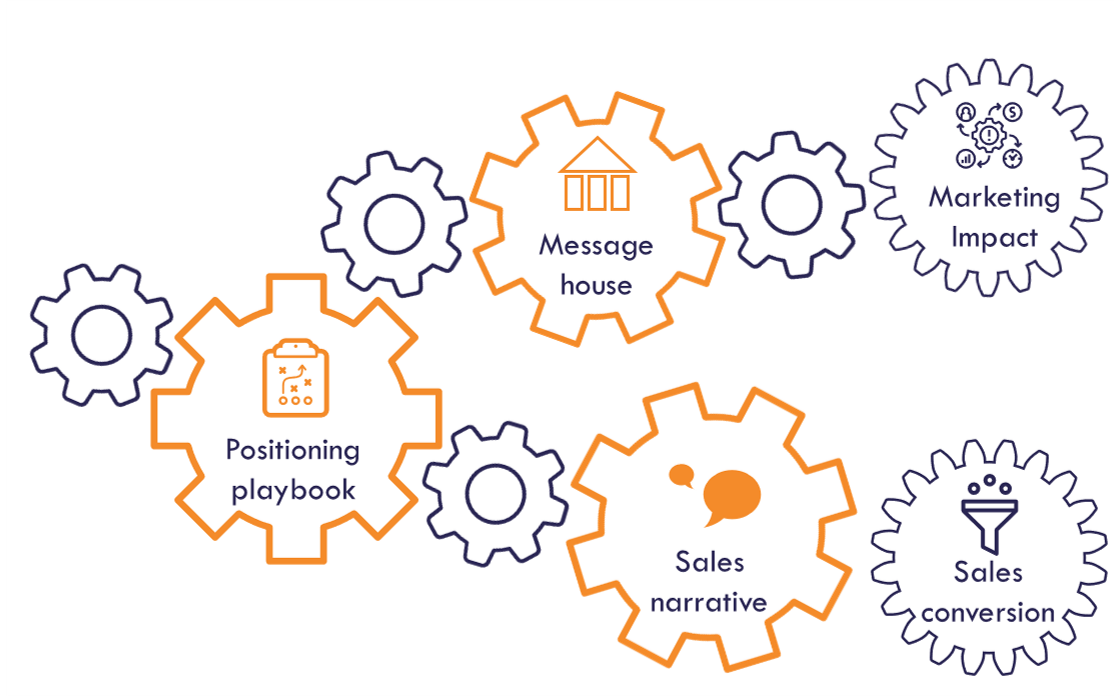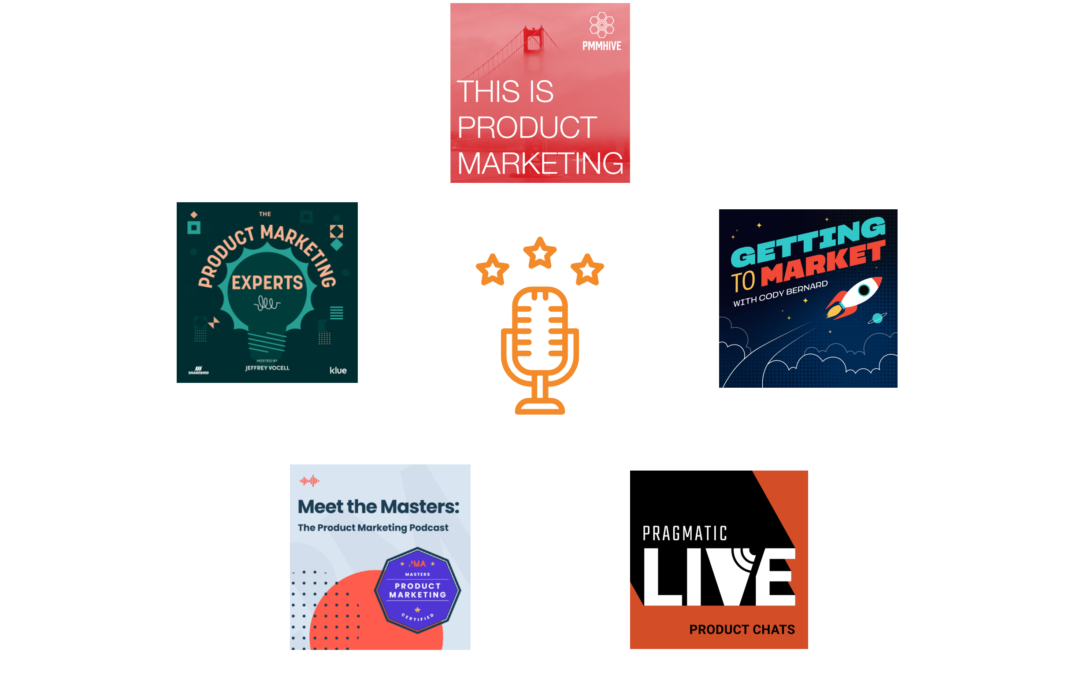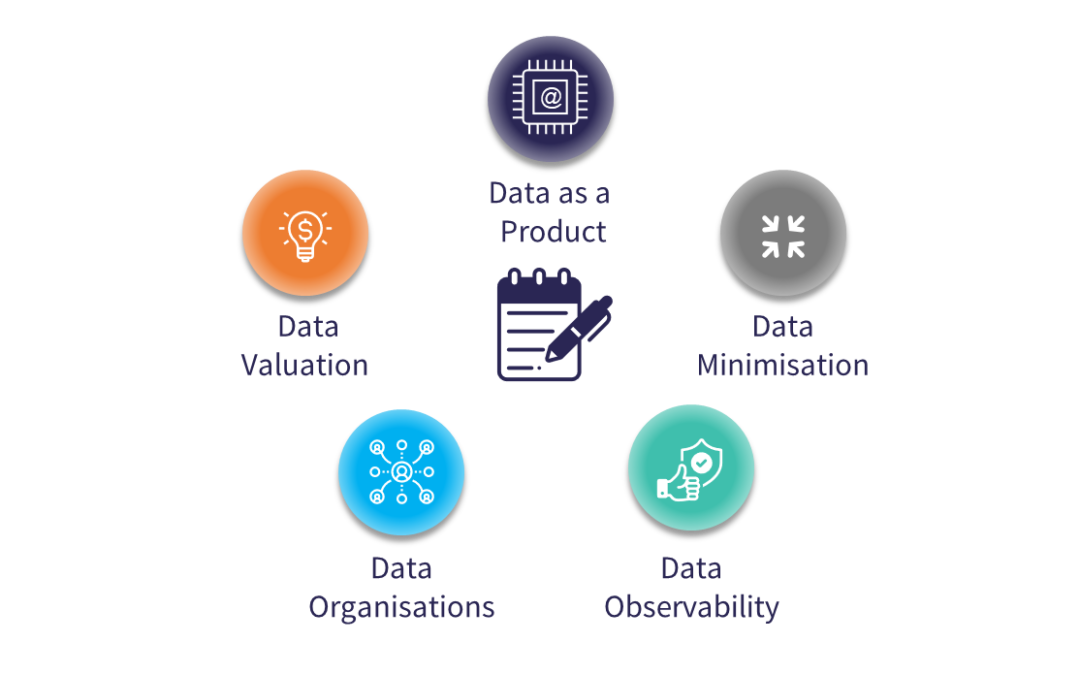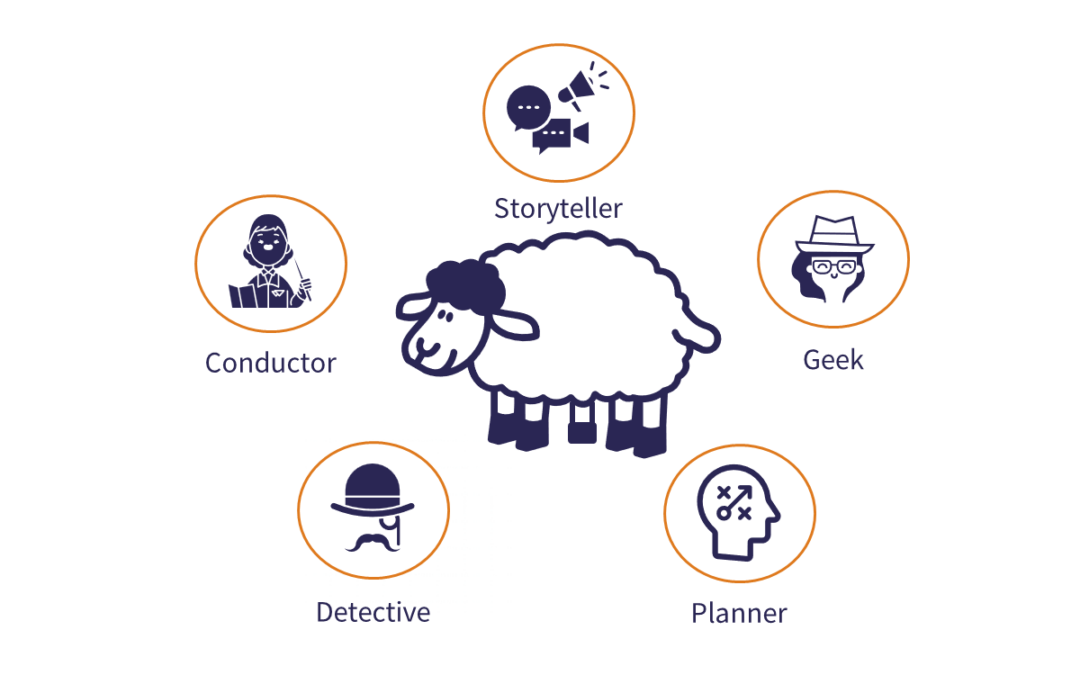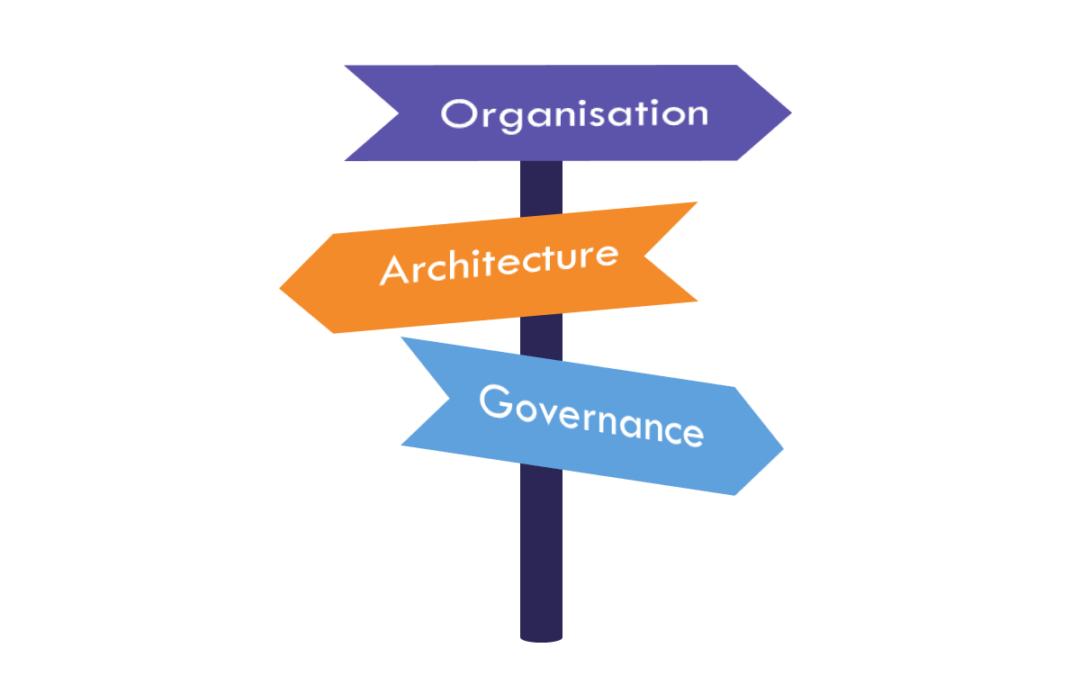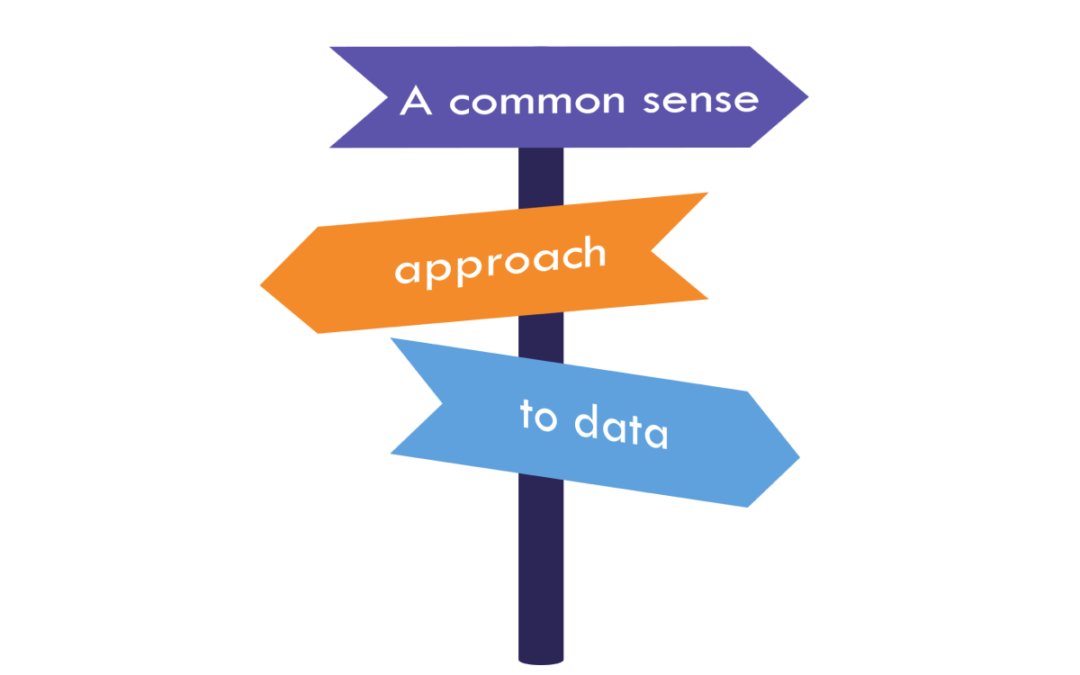Our hyper-connected world has created limitless opportunities for B2B companies to communicate and reach their audiences anytime, anywhere. Unfortunately, this has contributed to information overload in a crowded market, causing consumer attention spans to shrink; attention has become one of the most difficult resources for sales and marketing to gain.
Marketing and sales teams have addressed this challenge at the edge by tailoring their content to each customer touchpoint, refining their targets, personalizing their communications for each audience, and using data-driven approaches to test, experiment, and refine their messages.
While this focus is necessary, it has tended to distract from the basics: how can we prevent delivering inconsistent messages to the market and reinventing the wheel for every customer conversation, every new piece of content, or every stage of a marketing campaign? You need to lay out a robust messaging framework that provides a better sense of purpose and lays the foundation for the value proposition that customer-facing stakeholders can instantiate in their communication.
Moreover, effective communication cannot happen in a vacuum. It should be driven by strategic imperatives, underpinned by a shared understanding of where the product should be in the customer’s mind and how it stands out from the alternatives. This is the purpose of positioning.
In this article, we will first review the effective positioning process. We will then look at how the product positioning can be communicated to the market through messaging. Finally, we will consider applying positioning to successful sales conversations.
Positioning as the foundation
Positioning is a cornerstone of successful product marketing. Popularised in the 1980s by Al Ries and Jack Trout in their book “Positioning: the battle for your mind“, its core principles are not new. There is no doubt about its relevance, but a common mistake is to confuse positioning and messaging. Positioning is a prerequisite, a home base that should be in place before you start conquering the market and its customers through sales and marketing activities. Many stakeholders in your organisation should be involved in this strategic exercise.
For a positioning statement, i.e. a document for internal use to formalise and share product positioning, you can find a myriad of templates on the web. But what matters most is not how the statement looks, but rather the process used to collectively define the positioning pillars. April Dunford, in her book “Obviously awesome: how to nail product positioning so customers get it“, outlines a methodology based on five, or eventually six, pillars: the competitive alternatives; the elements that differentiate you from these alternatives; the value and benefits that these elements bring; the ideal target that will fully benefit from this value; the market category in which you want to position yourself to attract the attention of this target. April Dunford adds an optional sixth pillar that links the product to market trends that make it particularly relevant.
In a B2B context, where technology is often a vehicle for change, this sixth pillar is likely to be a must. Relevant trends are generally useful in competing against a status quo where your prospects may be convinced of the why, but not the why now.

All too often, the effort required to define positioning is underestimated and delegated to individual product marketing staff or an external agency. Don’t make this mistake, see it as a collective, cross-functional effort. It must have the involvement and buy-in of the product, marketing, sales, customer success teams, and senior management.
The goal is to define how the product will be perceived by customers and how it will be differentiated from the competition. This requires a solid knowledge of customer needs, the target market and the competition. Therefore, the exercise often starts with customer research and interviews.
Then, ideally through a series of workshops, the five or six pillars need to be jointly defined and agreed upon. Of these pillars, the fourth can require particular attention as it relates to segmentation and the definition of the best-fit customers. There are different methods for defining the target market, such as the Ideal Customer Profile (focusing on the types of companies), the Buyer Persona (focusing on the roles), or the Jobs To Be Done (focusing on the business activities that your product will help to accomplish). Whatever method you use, don’t over-engineer this part: segmentation is a discipline per se, needed as part of the positioning effort, but it will evolve and be refined independently after you have completed your positioning initiative.
Product marketing is ideally placed to lead the positioning initiative in the form of one or more sprints over a few weeks. It is also advisable to use an external facilitator to help bring opinions into positive conflict and ensure buy-in from all stakeholders. A positioning playbook is the main deliverable of the positioning project, to be used as an internal reference document that can be shared widely across the enterprise and as the home base for messaging and sales narrative design.
A messaging house to support consistent messaging across channels and audience
While positioning provides the ‘what to know’, product messaging focuses on the ‘what to say’. Product messaging is how you communicate your product’s value and relevance to customers. Product Marketing is the guardian of messaging but is not tasked with writing every product-related communication. Therefore, there is a need for a discipline that keeps messaging “linked and liquid”. Linked, to ensure messaging consistency at scale. Liquid, by enabling large audiences (mainly internal, but also business partners and advocates) to easily instantiate a corporate message into their specific communications.
The messaging house is the overarching vehicle for achieving this goal. Based on positioning (the foundation), it bundles an overarching message (the roof) and your key benefits (the house’s rooms, generally 3 or 4).
A useful tool for framing the messaging house is PMM Hive’s Positioning For Advantage (PFA). PMM Hive is a product marketing community founded by Crispin Read that promotes the free sharing of product marketing knowledge. They provide templates along with free training on PFA, and access to a slack community. What’s interesting about this framework is that it nicely bridges the positioning approach and message house.
The figure below shows the messaging house I’m using at Audatacity. It is inspired by the PFA framework, but it also takes into account other inputs. A message house is most often for marketing and communications teams, but can be communicated more widely. It is usually enriched with pre-defined descriptions (such as 50, 100 and 250-word descriptions), customer quotes, etc. It can be delivered as a marketing playbook or as part of a positioning playbook.

A sales narrative to spark customer conversations
While there is a need for consistent messaging across marketing and sales, each requires different types of content. Marketing generally has a broader message, delivered in short and compelling sound bites. In addition, there can be no assumption that marketing content will be consumed in sequence.
Salespeople expect messaging that helps them to drive the sales conversation, through a customer-centric dialogue in which they can discover the customer’s context and pain points and outline a solution that can address them today. This is where Storytelling unfolds its full potential: it intends to add an emotional approach to the classic logical argument (from a problem to its solution), to capture the audience’s attention with a story, then stimulate their appetite for change, and finally persuade them with rational and emotional arguments.
When delivered through a sales narrative, storytelling provides a step-by-step approach to customer-facing conversations that can be applied in different sales situations: a short introductory conversation at a trade show, an outbound call handled by a sales development representative, a remote meeting with an existing customer, or a prepared face-to-face meeting with a prospect’s executives. Therefore, there is no ideal single document to support the delivery of the narrative: it could be a slide deck, a whiteboard, a sales script, etc., depending on the context. These packaged deliverables can come later, but what matters most is the framework of the story, from setting the context to highlighting your solutions with proof points and next steps.
A useful framework for defining a sales narrative is the Challenger Sales Choreography, which is part of a broader sales methodology described in the book: “The Challenger Sale: How to Take Control of the Customer“. This choreography is a six-step approach from context setting (highlighting the problem) to provocation (highlighting the pitfalls of the status quo or conventional approaches to the problem) to the new way forward with your solutions.
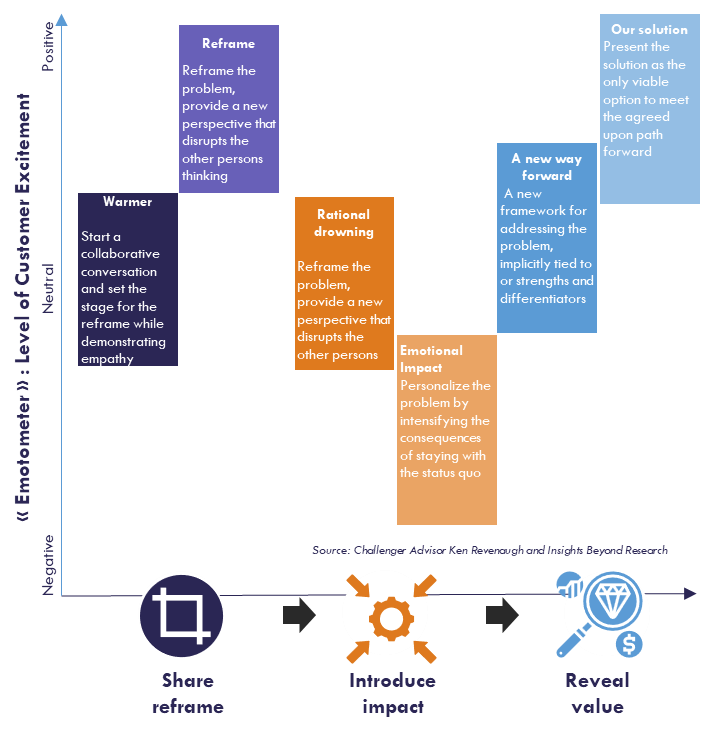
When delivered properly, sales messaging is extremely powerful, as it aligns the whole organisation with a common approach, delivering their story to a wide audience with a highly impactful and magnified message. But it requires robust training, change management and exec sponsorship. The challenge is that salespeople are not necessarily comfortable with storytelling and might be reluctant to behave as trusted advisors provoking their counterparts into a new way forward.
A sales playbook is the linchpin to make this happen, together with a sales enablement program that includes training, certification, and coaching. It is also important to gather feedback while identifying best practices, top performers, and success stories.
Are you ready for the take-off?
In most organisations, messaging and positioning are by-products. Many stakeholders use flavours of them as part of their respective activities, on an ad hoc basis and with poor alignment. This limits the impact sales and marketing can have at each customer touchpoint, ultimately altering growth.
By building on the positioning, message house and sales narrative, product marketing have the opportunity to unify and align the whole organisation and unleash the full potential of your product.
Want to learn more? Check out Audatacity‘s packaged approach to positioning and messaging.

